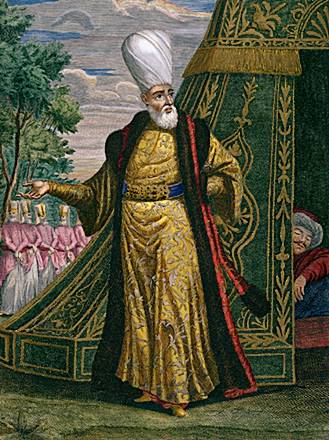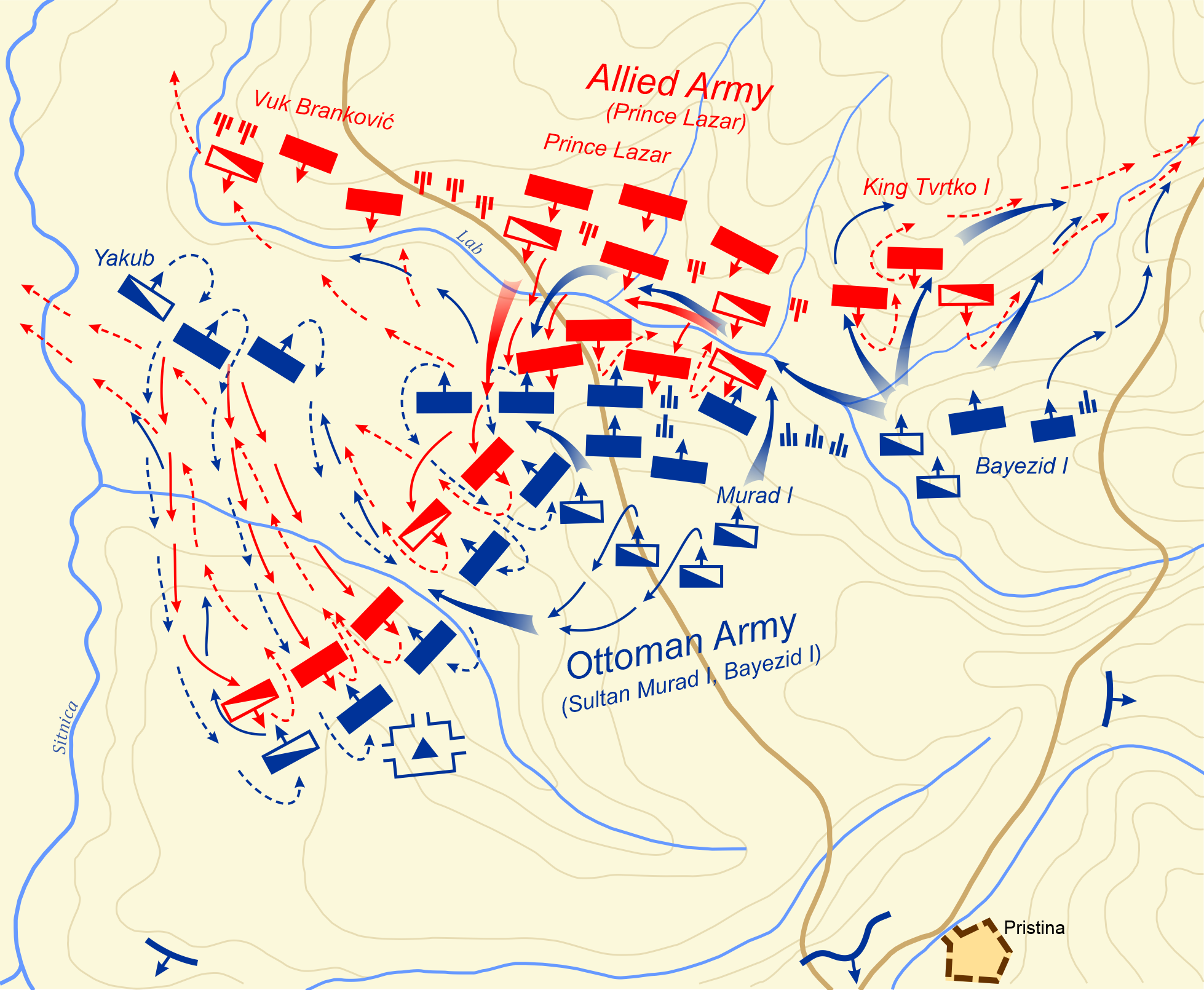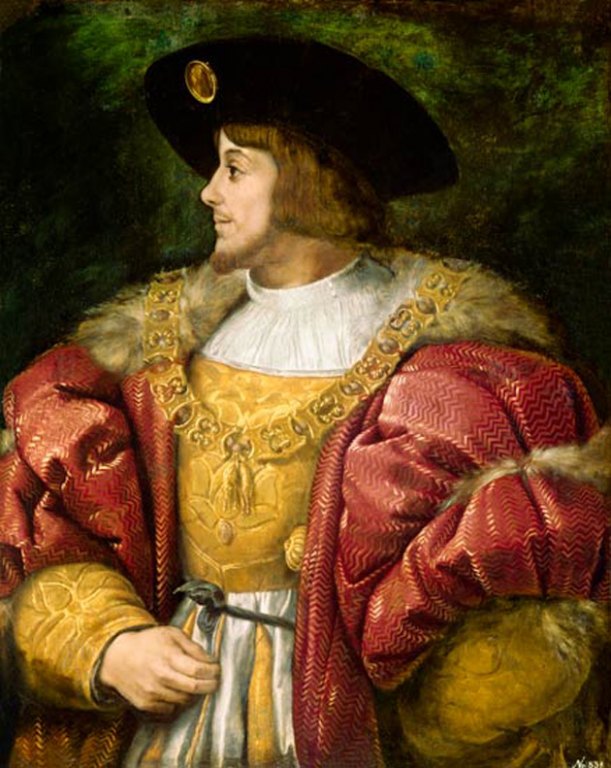|
Janissaries
A janissary (, , ) was a member of the elite infantry units that formed the Ottoman sultan's household troops. They were the first modern standing army, and perhaps the first infantry force in the world to be equipped with firearms, adopted during the reign of Murad II (r. 1421–1444, 1446–1451). The corps was established under either Orhan or Murad I, and dismantled by Mahmud II in 1826. Janissaries began as elite corps made up through the '' devşirme'' system of child levy enslavement, by which indigenous European Christian boys, chiefly from the Balkans, were taken, levied, subjected to forced circumcision and forced conversion to Islam, and incorporated into the Ottoman army. They became famed for internal cohesion cemented by strict discipline and order. Unlike typical slaves, they were paid regular salaries. Forbidden to marry before the age of 40 or engage in trade, their complete loyalty to the Ottoman sultan was expected. By the 17th century, due to a drama ... [...More Info...] [...Related Items...] OR: [Wikipedia] [Google] [Baidu] |
Agha Of The Janissaries
The Agha of the Janissaries or Janissary Agha (; ) was a top Ottoman Empire, Ottoman military official and courtier, and the commander of the Janissary corps. Apart from the commander-general of the entire corps, the title of "Agha of the Janissaries" was also borne by the commanders of provincial garrisons of Janissaries. Appointment and duties The Agha (title), Agha was chosen by the Ottoman Sultan, but was not necessarily himself a Janissary. To secure the often uncertain loyalty of the corps, Bayezid II () stopped the practice of appointing the (the commander of the regiments) to the post, and instead nominated a member of his own household to the post. These were usually pages who had been recruited, like the Janissaries, via the system, but then had been educated in the palace school, then proven their ability in the inner, private palace service (), before being appointed to senior posts in the palace's outer service (). At the same time, Bayezid founded the () regiment ... [...More Info...] [...Related Items...] OR: [Wikipedia] [Google] [Baidu] |
Ottoman Army In The 15th–19th Centuries
The Ottoman army was the military structure established by Mehmed II () during his reorganization of the Ottoman state and its military. It resulted from a major reorganization of the standing army dating from the time of Sultan Orhan (), which had centred on janissaries who were paid by salary rather than rewarded with booty or fiefs. The army built by Orhan had operated during the period of the rise of the Ottoman Empire (1299 to 1453). The organization introduced by Mehmed II was twofold, central (, the household division) and peripheral (, province-level). Sultan Mahmud II forced this army to disband on 15 June 1826 in what is known as Auspicious Incident, which followed a century-long reform effort. Predecessor force The medieval Ottoman Empire had become the first country to maintain a standing army in Europe since the days of the Roman Empire. The force originated in the 14th century. The Ottoman army may have also been the first to equip with firearms, which they acqu ... [...More Info...] [...Related Items...] OR: [Wikipedia] [Google] [Baidu] |
Fall Of Constantinople
The Fall of Constantinople, also known as the Conquest of Constantinople, was the capture of Constantinople, the capital of the Byzantine Empire by the Ottoman Empire. The city was captured on 29 May 1453 as part of the culmination of a 55-day siege which had begun on 6 April. The attacking Army of the classical Ottoman Empire, Ottoman Army, which significantly outnumbered Constantinople's defenders, was commanded by the 21-year-old List of sultans of the Ottoman Empire, Sultan Mehmed the Conqueror, Mehmed II (later nicknamed "the Conqueror"), while the Byzantine army (Palaiologan era), Byzantine army was led by List of Byzantine emperors, Emperor Constantine XI Palaiologos. After conquering the city, Mehmed II made Constantinople the new Ottoman capital, replacing Edirne, Adrianople. The fall of Constantinople and of the Byzantine Empire was a watershed of the Late Middle Ages, marking the effective end of the Roman Empire, a state which began in roughly 27 BC and had la ... [...More Info...] [...Related Items...] OR: [Wikipedia] [Google] [Baidu] |
Great Siege Of Malta
The Great Siege of Malta (Maltese language, Maltese: ''L-Assedju l-Kbir'') occurred in 1565 when the Ottoman Empire attempted to conquer the island of Malta, then held by the Knights Hospitaller. The siege lasted nearly four months, from 18 May to 8 September 1565. The Knights Hospitaller had been Hospitaller Malta, headquartered in Malta since 1530, after being driven out of Rhodes, also by the Ottomans, in 1522, following the Siege of Rhodes (1522), siege of Rhodes. The Ottomans first attempted to take Malta in 1551 but failed. In 1565, Suleiman the Magnificent, the Ottoman Sultan, made a second attempt to take Malta. The Knights, who numbered around 500 together with approximately 6,000 footsoldiers, withstood the siege and repelled the invaders. This victory became one of the most celebrated events of sixteenth-century Europe, to the point that Voltaire said: "Nothing is better known than the siege of Malta." It undoubtedly contributed to the eventual erosion of the European ... [...More Info...] [...Related Items...] OR: [Wikipedia] [Google] [Baidu] |
Lambert Wyts
Lambert Wyts or Lambert Wijts (1542 – ?) was a Flemish courtier, Drawing, draughtsman and diarist. Born into a prominent family in the County of Flanders he became a courtier in the service of the Habsburg dynasty. In this role, he made three diplomatic trips respectively to Spain, Turkey and the Holy Roman Empire.M. Gachard, ''I. Notice des manuscrits concernant l'histoire de la Belgique qui existent à la Bibliothèque impériale, à Vienne'' Bulletin de la Commission royale d'Histoire Année 1863, 5, pp. 235-390 He kept a diary of his travels which contribute to the understanding of contemporary circumstances in those countries. [...More Info...] [...Related Items...] OR: [Wikipedia] [Google] [Baidu] |
Mahmud II
Mahmud II (, ; 20 July 1785 – 1 July 1839) was the sultan of the Ottoman Empire from 1808 until his death in 1839. Often described as the "Peter the Great of Turkey", Mahmud instituted extensive administrative, military, and fiscal reforms. His disbandment of the conservative Janissary, Janissary Corps removed a major obstacle to his and his successors' reforms in the Empire, creating the foundations of the subsequent Tanzimat era. Mahmud's reign was also marked by further Ottoman military defeats and loss of territory as a result of nationalist uprisings and European intervention. Mahmud ascended the throne following an Ottoman coups of 1807–1808, 1808 coup that deposed his half-brother Mustafa IV. Early in his reign, the Ottoman Empire ceded Bessarabia to Russia at the end of the Russo-Turkish War (1806–1812), 1806–1812 Russo-Turkish War. Greece waged a Greek War of Independence, successful war of independence that started in 1821 with British, French and Russian su ... [...More Info...] [...Related Items...] OR: [Wikipedia] [Google] [Baidu] |
Battle Of Kosovo
The Battle of Kosovo took place on 15 June 1389 between an army led by the Serbian Prince Lazar Hrebeljanović and an invading army of the Ottoman Empire under the command of Sultan Murad I. It was one of the largest battles of the Late Middle Ages. The battle was fought on the Kosovo field in the territory ruled by Serbian nobleman Vuk Branković, in what is today Kosovo, about northwest of the modern city of Pristina. The army under Prince Lazar consisted mostly of his own troops, a contingent led by Branković, and a contingent sent from Bosnia by King Tvrtko I, commanded by Vlatko Vuković. Additionally, Lazar was also supported by a Christian coalition from various European ethnic groups. Prince Lazar was the ruler of Moravian Serbia and the most powerful among the Serbian regional lords of the time, while Branković ruled the District of Branković and other areas, recognizing Lazar as his overlord. Reliable historical accounts of the battle are scarce. The bulk of ... [...More Info...] [...Related Items...] OR: [Wikipedia] [Google] [Baidu] |
Orhan
Orhan Ghazi (; , also spelled Orkhan; died 1362) was the second sultan of the Ottoman Empire from 1323/4 to 1362. He was born in Söğüt, as the son of Osman I. In the early stages of his reign, Orhan focused his energies on conquering most of northwestern Anatolia. The majority of these areas were under Byzantine rule and he won his first battle at Pelekanon against the Byzantine Emperor Andronikos III Palaiologos. Orhan also occupied the lands of the Karasids of Balıkesir and the Ahis of Ankara. A series of civil wars surrounding the ascension of the nine-year-old Byzantine emperor John V Palaiologos greatly benefited Orhan. In the Byzantine civil war of 1341–1347, the regent John VI Kantakouzenos married his daughter Theodora to Orhan and employed Ottoman warriors against the rival forces of the empress dowager, allowing them to loot Thrace. In the Byzantine civil war of 1352–1357, Kantakouzenos used Ottoman forces against John V, granting them the use of ... [...More Info...] [...Related Items...] OR: [Wikipedia] [Google] [Baidu] |
Battle Of Chaldiran
The Battle of Chaldiran (; ) took place on 23 August 1514 and ended with a decisive victory for the Ottoman Empire over the Safavid Empire. As a result, the Ottomans annexed Eastern Anatolia and Upper Mesopotamia from Safavid Iran. It marked the first Ottoman expansion into Eastern Anatolia, and the halt of the Safavid expansion to the west. The Battle of Chaldiran was just the beginning of 41 years of destructive war, which only ended in 1555 with the Peace of Amasya. Though the Safavids eventually reconquered Mesopotamia and Eastern Anatolia under the reign of Abbas the Great (r. 1588–1629), they would be permanently ceded to the Ottomans by the 1639 Treaty of Zuhab. At Chaldiran, the Ottomans had a larger, better-equipped army numbering 60,000 to 100,000 and many heavy artillery pieces. In contrast, the Safavid army numbered 40,000 to 80,000 and did not have artillery. Ismail I, the leader of the Safavids, was wounded and almost captured during the battle. His wives were ... [...More Info...] [...Related Items...] OR: [Wikipedia] [Google] [Baidu] |
Battle Of Mohács
The Battle of Mohács (; , ) took place on 29 August 1526 near Mohács, in the Kingdom of Hungary. It was fought between the forces of Hungary, led by King Louis II of Hungary, Louis II, and the invading Ottoman Empire, commanded by Suleiman the Magnificent and his grand vizier, Pargalı Ibrahim Pasha. The Ottomans achieved a decisive victory through superior planning, firepower, and a well-executed encirclement that overwhelmed the Hungarian forces. The Hungarian army, encouraged by the nobility to engage prematurely, launched a frontal assault that collapsed under coordinated Ottoman counterattacks. King Louis and much of the Hungarian aristocracy were killed, resulting in the destruction of the royal army and the end of the Jagiellonian dynasty in Hungary and Bohemia. The aftermath saw the partition of Hungary between the Ottoman Empire, the Habsburg monarchy, and the Eastern Hungarian Kingdom. The battle marked the beginning of sustained Ottoman–Habsburg wars and the ... [...More Info...] [...Related Items...] OR: [Wikipedia] [Google] [Baidu] |
Battle Of Ankara
The Battle of Ankara or Angora () was fought on 28 July 1402, at the Çubuk plain near Ankara, between the forces of the Ottoman sultan Bayezid I and the emir of the Timurid Empire, Timur. The battle was a major victory for Timur, and it led to the Ottoman Interregnum. Background Timur, a Turco-Mongol from Transoxiana (now Uzbekistan), had built an empire in Central Asia over the years, and became the most powerful ruler in Central Asia since Genghis Khan. He sought to rebuild the once great Mongol Empire. In the 1380s and 1390s, he invaded and conquered parts of Persia (including Azerbaijan and Upper Mesopotamia), ravaged southern Russia and Ukraine (1395–96), and sacked Delhi (1398). Although there had been tensions between the Ottomans and Mongols, nothing would warrant a war, until Bayezid demanded tribute from an emir loyal to Timur, which he understood to be a personal affront and a reason for war. In 1400–01 Timur took Sivas from the Ottomans, parts of Syria from the ... [...More Info...] [...Related Items...] OR: [Wikipedia] [Google] [Baidu] |
Battle Of Varna
The Battle of Varna took place on 10 November 1444 near Varna in what is today eastern Bulgaria. The Ottoman army under Sultan Murad II (who did not actually rule the sultanate at the time) defeated the Crusaders commanded by King Władysław III of Poland and Hungary, John Hunyadi (acting as commander of the combined Christian forces) and Mircea II of Wallachia. It was the final battle of the unsuccessful Crusade of Varna, a last-ditch effort to prevent further Ottoman expansion into the Balkans. Background The Hungarian Kingdom fell into crisis after the death of King Sigismund in 1437. His son-in-law and successor, King Albert, ruled for only two years and died in 1439, leaving his widow Elizabeth with an unborn child, Ladislaus the Posthumous. The Hungarian noblemen then called the young King Władysław III of Poland to the throne of Hungary, expecting his aid in defense against the Ottomans. After his Hungarian coronation, he never went back to his homeland again, as ... [...More Info...] [...Related Items...] OR: [Wikipedia] [Google] [Baidu] |









